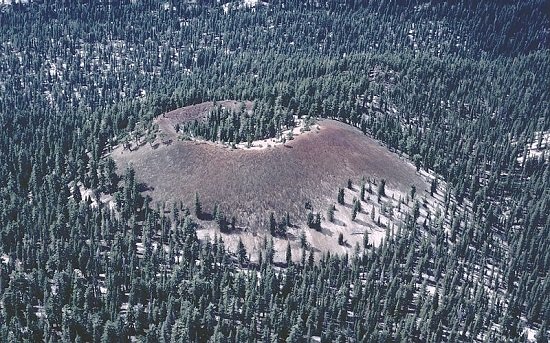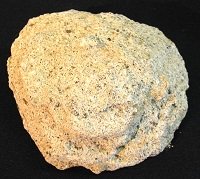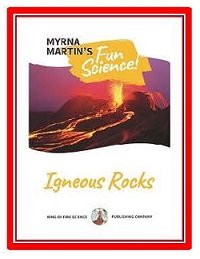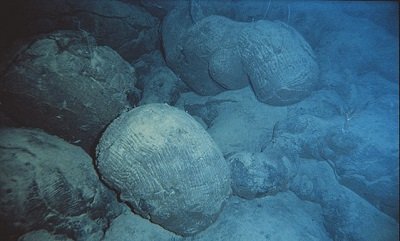Volcanic eruptions create Pyroclastic Rocks
What are pyroclastic rocks
Volcanic eruptions create pyroclastic rocks
Pyroclastic rocks is a general term used for all rocks that form during volcanic eruptions. The term pyroclastic means fire broken or fire fragments. New pyroclastic material form each time a volcano erupts. The molten rock, magma, that came out of the vent of a volcano cools and hardens forming the newest rocks on our planet.

Cinder cone with pine trees growing in the summit crater Miller USGS
Tephra & Lava rocks
Tephra are pyroclastic rocks that were airborne
Igneous rocks that have been airborne for a period of time before settling to the Earth are all called tephra. Tephra includes all types of airborne rocks that were produced during a volcanic eruption.
Lava is molten rocks that come out in a lava flow
Magma, which is molten rock beneath the Earth's surface, becomes lava as it flows out of a volcano during an eruption. It is also the general term used to describe rocks that form during a lava flow.

Ash flow tuff
Ash flow tuff forms when pyroclastic flows of extremely hot
gases and ash flow down the sides of a volcano. The material is hot enough to
“weld” the ash together forming welded tuff. The glassy fragments of pumice in
the pyroclastic flow deform readily and often form curved shapes during the
welding process.


Click for More Information and to Order
Cinders and cinder cones
Cinders are small rocks that create cinder cones
Cinders are similar to pumice but are usually made of iron-rich minerals found in basalt lava. Cinders may be semi-liquid or solid when blown from a volcano vent. Cinders that are semi-liquid become aerodynamic in shape forming lava bombs like the picture above. Scoria is the more recent term preferred by most geologists for this type of rock.
Why I use the term cinder instead of scoria
I live in volcano country in a subduction zone. I have never heard the term for these rocks referred to as scoria and scoria cones. All of the hundreds of small volcanoes made of cinders (scoria) that dot the landscape where I live are called cinder cones. Cinder Butte is an example of a well known cinder cone in our area.

Pillow Basalt
Pillow basalt forms when basalt lavas erupt underwater. The pillow lava contains dark minerals that are iron and magnesium rich. The molten lava cools rapidly on all sides forming pillow-shaped bodies.
Where pillow basalt forms
Pillow lava typically forms at mid-ocean ridges and hot spot volcanoes in the ocean basins. Basalt forms the crust of all the ocean basins and is the most common rock in the Earth's crust. The picture shows pillow basalt rocks on the seafloor near Hawaii. NOAA
Pumice
Pumice is a volcanic glass
Pumice is a volcanic glass that is associated with violent volcanic eruptions. Rhyolite and dacite magmas produce pumice. Gas
bubble holes in pumice lower the density of the rock enough that pumice is
often buoyant enough to float. Sailors in past years told stories about walking
to shore on pumice from their boats. Pumice rocks will sometimes float on the
surface of the ocean for thousands of miles. The rocks sink
when the gas bubble holes fill with water.
KIDS FUN Science Bookstore
Check out Myrna Martin's award winning textbooks, e-books, videos and rock sets. The Kids Fun Science Bookstore covers a wide range of earth science topics. Click here to browse.










